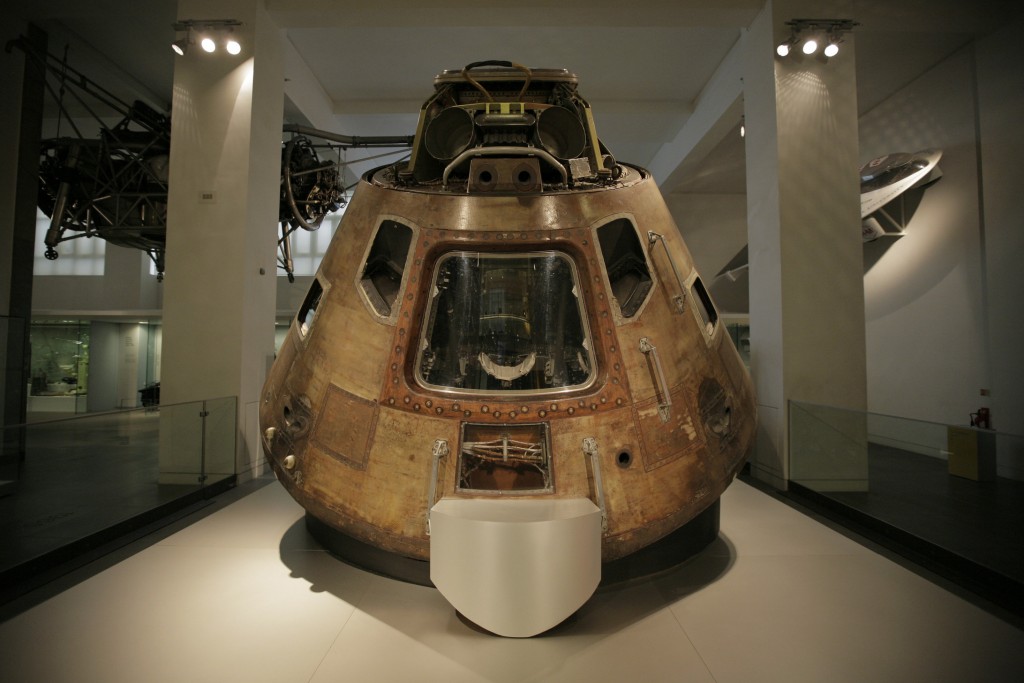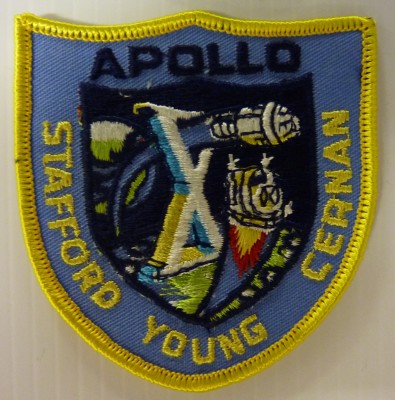Rachel Boon, Assistant Curator of Technologies and Engineering, writes about Apollo 10 and four decades of space exploration.
Forty four years ago today, on 26th May 1969, NASA’s Apollo 10 command module and crew of three splashed into the Pacific Ocean after eight days in space. The mission, a dry run for Apollo 11, returned valuable information about our nearest cosmic neighbour ahead of the Moon landing later that year.
The team of three astronauts – Thomas Stafford, John Young and Eugene Cernan – returned with the most impressive images of the Moon surface ever seen. Thomas Stafford described the surface as “very smooth, like wet clay”. Two months later the Apollo 10 mission proved its worth as Neil Armstrong and Buzz Aldrin became the first humans to walk on the surface of the Moon.

Apart from the giant Apollo 10 command module on display in our Making the Modern World gallery (the only one outside of the United States), we have smaller, yet just as significant, objects from the Apollo 10 mission in our collection, including mission patches.

Mission patches have been an important part of the military long before humans were sent in space. Many of the first astronauts started their lives as pilots of planes not spacecraft. With this background the tradition to wear specially designed patches became, though not smoothly, a custom of NASA missions.
Interestingly the astronauts are heavily involved in the design of their mission patches and the Apollo 10 mission was no different. Gene Cernan explained that his team, with the help of artist Allen Stevens, wanted a badge which showed the mechanics and goals of their mission.
They decided on a patch in the shape of a shield with the mission number written in Roman numerals stretching from the Moon to their space capsule orbiting above. The name of the mission and the astronauts are clearly visible around the edge of the shield.
Each culture has used space mission patches in its own way.
In 1963 the Russian cosmonaut Valentina Tereshkova blasted into space in the spacecraft Vostok 6.
Not only did she became the first woman in space but she is also considered the first cosmonaut to wear a mission patch, two years before the US officially introduced them into their space programme. Tereshkova’s insignia was a white dove with the letters CCCD stitched below.
We now have another patch to look forward to seeing, that of Tim Peake, who was announced as the UK’s first official astronaut last week at the Science Museum.

Peake will be launching into space in December 2015 to spend six months on the International Space Station (ISS). Although his mission may be different to that of Valentina Tereshkova and the crew of the Apollo 10, Peake is not unlike space explorers of yesteryear as he will be continuing to push the boundaries of human endurance and explore the unknowns of space.
One comment on “From patches to Peake”
Comments are closed.
Great post. I’m so happy for Peake, it’s a very exciting time having our first British astronaut and I look forward to seeing his launch.